Young at Heart
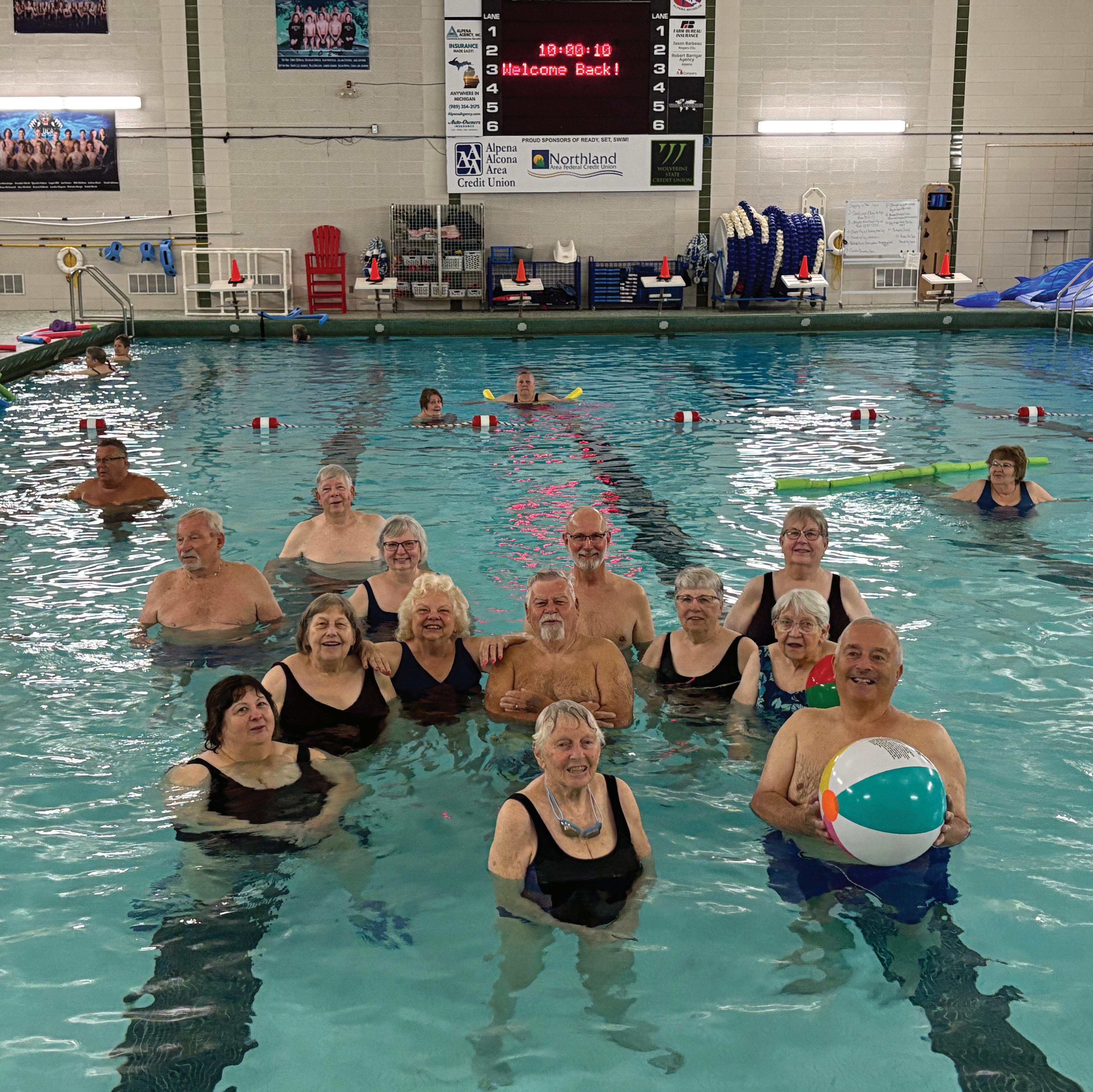
SUPPLEMENT TO THE ALPENA NEWS • WEDNESDAY, JUNE 11, 2025


SUPPLEMENT TO THE ALPENA NEWS • WEDNESDAY, JUNE 11, 2025
By KAYLA WIKARYASZ News Staff Writer
ALPENA —- Eve Phillips, a 90-year-old Alpena resident, teaches a senior fitness class at the Alpena Plaza Pool three days a week. She was a physical education instructor for 30 years and has continued to teach swimming classes well into her retirement years.
Phillips said that all together, she’s been teaching swimming for 60 years and swimming has afforded her a healthy life. The activity has also kept her involved with the community.
“My two favorite things to teach are swimming and dancing,” Phillips said. “I still tap and I’m 90.”
Phillips explained that swimming has many health benefits and she has seen over the years how the activity has improved people’s lives.
“I have reached 90,” Phillips said. “That’s a benefit.”
Further, Phillips explained that the senior classes she teaches at the Alpena Plaza Pool offer her class participants opportunities to enjoy each other’s company.
She said three aspects of the class are important for seniors.

ready swam there and Eagling needed to fix her health.
Bonnie Altman, one of Phillips’ class participants, has been frequenting the Alpena Plaza Pool for 40 years.
“So I’ve been with Eve right from the beginning,” Altman said.
Altman explained that without regularly swimming, she can immediately feel the effects in her body.
“Just two weeks off and I noticed the difference in my muscles,” Altman said.
Altman also agreed with Phillips and noted that the social aspects of attending swimming classes are just as important as the physical benefits.
“Socially, we get to know each other. We make friends,” Altman said. “I feel young at heart and my body is a lot younger than a lot of my friends … Eve inspires us.”
Altman also explained that the social aspect of Phillips’ classes transcends generations.
“We have whole families that come here,” Altman said. “One lady in her 80s and her three daughters. My mother used to come here.”
Mary Eagling said that she frequents the Alpena Plaza Pool because her daughters al-
“The exercise, the balance, and the social,” Phillips said. “The friendship that is developed because of the social atmosphere that goes on here, it’s all part of it.”
Eagling said her daughters were swimming at the pool before she started, “But my A1C, it crept up to where I was prediabetic. And so I had to get into an exercise program. So I’ve been doing this for, probably, three years.”
Eagling said that now her AIC is under control. Altman said some of her friends who were also prediabetic were able to reverse their numbers and are in better health because of swimming.
Bob Bunting, one of Phillips’ class regulars, explained that his favorite class at the Alpena Plaza Pool is water volleyball. He also said that swimming has helped his health, as well.
“I’ve had cancer for 12 years now and (swimming) keeps me alive,” Bunting said.
Phillips stated that teaching and swimming is her calling in life.
“It’s who I am,” Phillips said. “We all have a gift. Mine is swimming and helping other people.”
Beyond her impressive track record teaching at the Alpena Plaza Pool, Phillips is also proud of the work she’s been able to accomplish with individuals with disabilities over the years.
“I taught all these people how to be water safe,” Phillips said. “(A student with a) traumatic head injury from an automobile accident. An amputee … I had kids who couldn’t hear so I took sign language so I could communicate with those people.”
Phillips said that the most impressive student she ever taught was a non-verbal child with autism. Phillips explained that it took two years, but she taught the student how to be comfortable and independent in the water.
At the end of the day, Phillips derives great joy from seeing the impact she has on those in the community. Though teaching senior swimming classes is a part-time job for Phillips, at 90 years old, she said that it is worthwhile.
“This is a ton of fun. And I do it because … well, because you see what’s going on,” Phillips said, pointing to class participants in the pool. “This is fun.”
Kayla Wikaryasz can be reached at 989358-5688 or kwikaryasz@TheAlpenaNews. com.
Participants in Eve Phillips’ senior fitness class are seen gathering in the pool for class. Phillips’ class occurs three days a week, Monday, Wednesday, and Friday at the Alpena Plaza Pool.
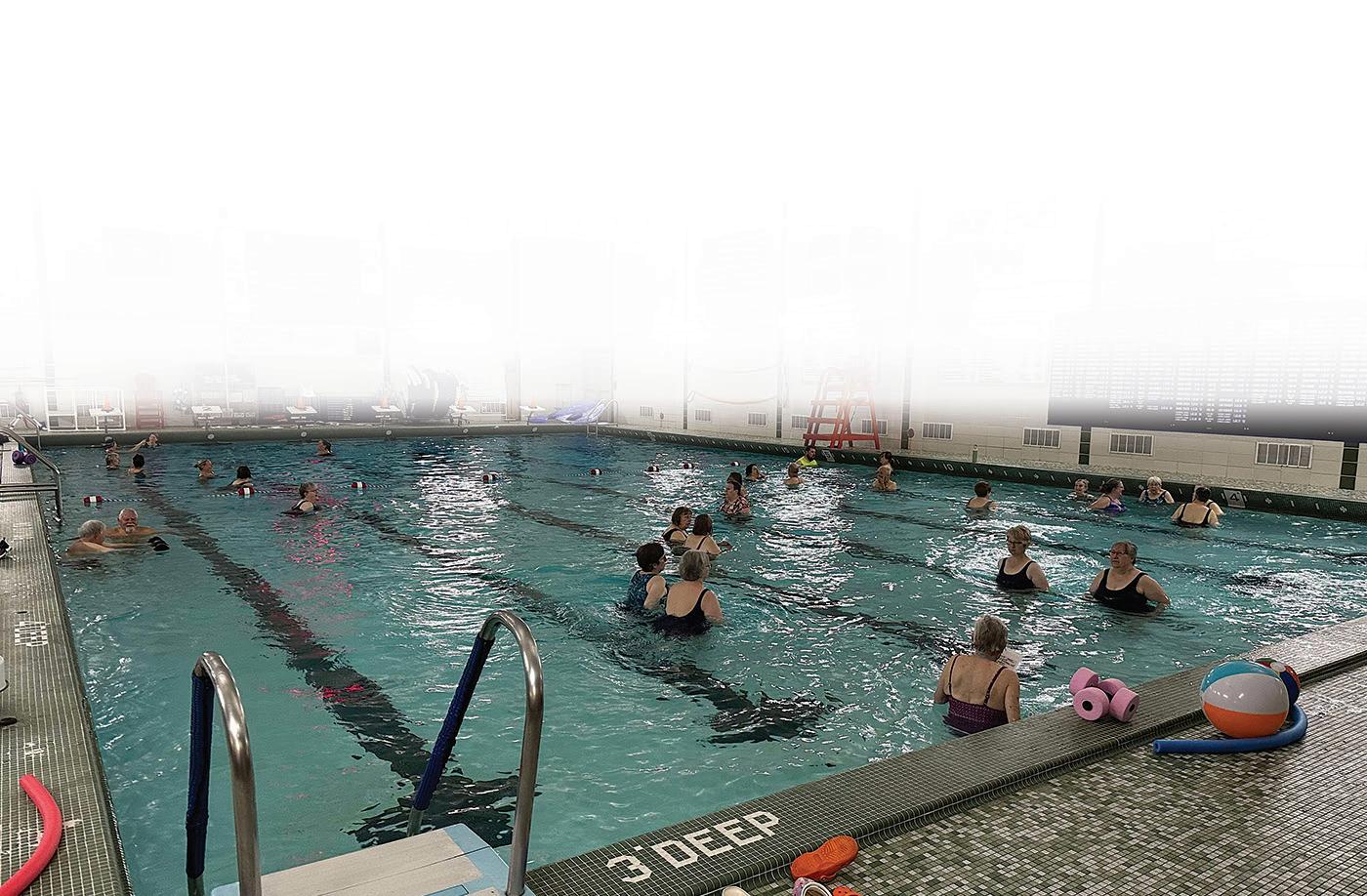
Physical activity is a valuable tool in the fight against chronic disease and other conditions. In fact, the Cleveland Clinic highlights physical activity among its nine ways to prevent disease in an effort to live a long and rewarding life.
Children, adolescents, young adults, and even men and women in middle age may not face too many physical hurdles when they try to exercise, but seniors are not always so lucky. Aging men and women with mobility issues may wonder if they can reap the rewards of physical activity, and thankfully there are many ways to exercise even if getting up and going isn’t as easy as it might have been in years past. Sometimes referred to as “aerobic exercise” or simply “cardio,” cardiovascular exercise is an umbrella term that encompasses a wide range of physical activities that raise the heart rate and improve endurance. Seniors with mobility issues can look to various forms of cardio for inspiration as they seek to be more physically active without compromising their overall health.
• Walk your way to a healthier you. Walking is a form of cardiovascular exercise that is ideal for older adults with mobility issues because it need not be physically demanding and it’s safe to walk just about anywhere. Walking in a place such as a local park can be particularly good for older adults because they can take periodic breaks on benches if aches, pains or stiffness is affecting their ability to keep moving.
• Take up swimming. Swimming might be tailor-made for seniors with mobility issues because it’s a great workout and exercising in water tends
to be less taxing on muscles and joints.
The Cleveland Clinic notes that swimming promotes heart health, strengthens the lungs, helps to burn calories, and builds muscle, among other benefits. And many seniors find swimming is just as fun in their golden years as it was in their youth, which means aging adults might not face problems with motivation when the time comes to get in the pool.
• Use an exercise bike or portable pedal exerciser. Cycling is a wonderful exercise but one that seniors with mobility issues may feel is no longer possible. If doctors advise against riding a traditional bike, an exercise bike or portable pedal exerciser can provide many of the benefits of cycling without as great a risk for accident or injury. A portable pedal exerciser can be carried to a park, where seniors can still spend time in the great outdoors, which is one of the most appealing reasons to get on a bike and go.
• Take beginner yoga or tai chi. HelpGuide.org notes that gentle yoga or tai chi can help to improve flexibility and reduce stress and anxiety. Though yoga and tai chi can provide as much demanding physical activity as individuals allow, beginner classes in each discipline don’t require much movement but do provide enough for seniors hoping to be less sedentary. Even seniors with mobility issues can find safe and effective ways to be more physically active. Prior to beginning a new exercise regimen, seniors with mobility issues are urged to discuss activities with their physicians.
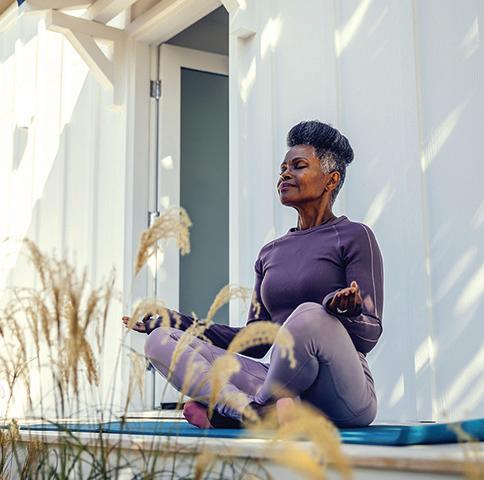


3. Aphasia may be mild or so severe it makes communication with an affected person nearly impossible.
4. The condition can affect mainly a single aspect of language, such as the ability to name objects or complete sentences. More often, though, it affects multiple aspects of communication.





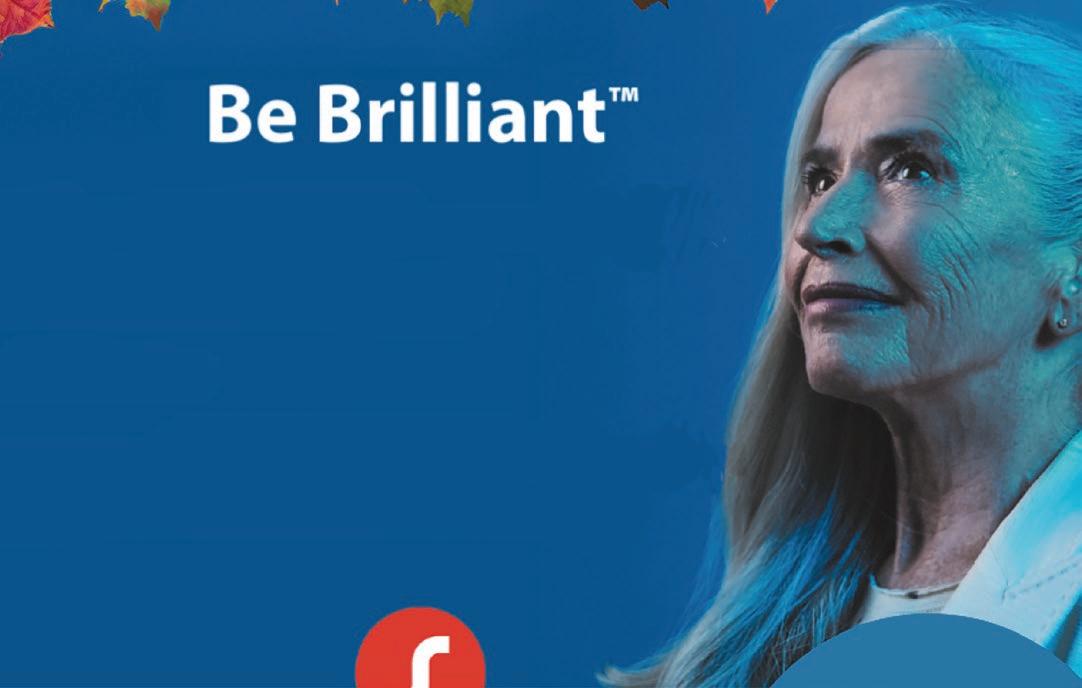




The ability to communicate is easily taken for granted. However, effective communication skills do not necessarily last a lifetime, and many people may develop difficulties with understanding words, speaking, reading, or writing.
Aphasia is a language disorder caused by damage to the area of the brain that controls language expression. Johns Hopkins Medicine says that aphasia can occur at any age, but more often affects those over the age of 65. Many people are unfamiliar with aphasia, but it can be helpful to learn more about this condition. Here are seven things to know about aphasia, courtesy of Johns Hopkins and The National Aphasia Association.
1. Aphasia is caused by damage to the language-dominant side of the brain, which is usually the left side.
2. Stroke is one of the biggest contributors to the onset of aphasia. Other brain injuries, such as head trauma, brain tumors or infections in the brain, also may cause aphasia.
5. There are three main types of aphasia. Broca aphasia is sometimes called an expressive aphasia. People can communicate, but may eliminate words from their language, resulting in short, meaningful sentences. They usually can understand some speech of others. Wernicke aphasia is sometimes called receptive aphasia. People with this type speak in long, confusing sentences with extra words. They usually have difficulty understanding others’ speech. Those with global aphasia have trouble with understanding and speaking.
6. Aphasia is more common than Parkinson’s disease, cerebral palsy or muscular dystrophy. Despite this, many people have never heard of the condition.
7. Improvement of conditions for those experiencing aphasia may be slow-going. Some people may improve over a period of years and even decades. If symptoms last longer than two or three months after a stroke, a complete recovery is improbable. Speech-language therapy, use of computers or pictures to express oneself, and group therapy often are treatment options.
Aphasia can be frustrating and scary for a patient and their loved ones. Depending on which areas of the brain are affected, a treatment and therapy plan can be adapted to the person’s specific needs.
No one wants to imagine a day when their vision might abandon them, but diminished eyesight is a common occurrence that affects people of all ages and from all walks of life. A 2022 report from the World Health Organization indicated that at least 826 million people have distance- or near-vision impairment that could be addressed with an appropriate pair of eyeglasses. Those people are among the estimated 2.2 billion people who currently have issues that affect their ability to see.
Cataracts are a common and treatable vision problem. Access to cataract treatment is limited in various countries. In fact, a 2021 study published in the journal Lancet Global Health found that 94 million people ages 50 and over have vision impairment or blindness that could be corrected through access to cataract surgery. Surgery might not even be considered if people are not first aware of the symptoms of cataracts, which can manifest in various ways.
• Blurry vision: The American Academy of Ophthalmology notes that blurriness may be associated with an assortment of vision problems, including cataracts. Blurry vision makes it difficult to see clearly or sharply, and cataracts are characterized by cloudiness that affects the natural lens of the eye. The blurriness associated with cataracts is the result of a breakdown of proteins in the lens of the affected eye, according to the AAO.
• Seeing double: Double vision also is symptomatic of various vision issues, including cataracts. The AAO notes that when a person is seeing
double, he or she may be seeing two, often overlapping, images of a single object.
• Sensitivity to light: The AAO notes a need to shield eyes from light to prevent eye pain could indicate a sensitivity to light that is characteristic of cataracts. This sensitivity may be especially noticeable when confronted by oncoming headlights at night.
• Difficulty seeing at night: The AAO reports that this symptom is often characterized by difficulty seeing in dark conditions that can make it harder to adjust to seeing when going from a well-lit space into darkness. That adjustment also may take longer in people experiencing cataracts. Some people may not be able to see at all in dimly lit conditions.
• Seeing faded colors: Bright colors that appear faded or yellow is another symptom of cataracts.
Cataracts compromise vision, but it’s important that people recognize there are effective treatments for this condition. More information is available at aao.org.
Keith Wallace, William Pfeifer & Theodore Johnson experienced attorneys right here in Alpena

Dementia can affect just about anyone. The World Health Organization says 57 million people had dementia worldwide in 2021, and every year there are nearly 10 million new cases. Dementia can result from a variety of diseases and injuries that affect the brain. Alzheimer’s disease is one of the more prevalent and well-known types of dementia.
While many people living with dementia may be able to manage on their own for a few years, or with somewhat minimal help from family, as the disease progresses, professional assistance likely will be needed. Often those facing a

dementia diagnosis will require the services of a skilled nursing facility or memory care unit at some point; otherwise, they may have 24-hour, in-home care from a dementia care professional. Caring for those with dementia can be rewarding, but it is very taxing.
Alzheimer’s San Diego says 35 percent of Alzheimer’s caregivers report their own health has suffered from their care responsibilities, as caring for someone with dementia takes an emotional toll.

It doesn’t take much to show a dementia care professional that they are appreciated. Here are a few ways to be gracious and honor these compassionate individuals.

• Offer kind words. One of the easiest ways to honor memory care workers is to provide support and offer compliments. Saying, “You’re doing a great job,” or “I couldn’t do this without you” will help the professional feel appreciated.
• Ask how you can help. Dementia care professionals are being paid for their services, but that doesn’t mean someone can’t pitch in and lend a hand. Offering to sit with the patient so that the worker can take a break for a few minutes, or offering to brainstorm solutions to a problem that has come up is an opportunity to share some of the burden that caring for someone with dementia can bring.
• Advocate for care workers. Advocate for policies and programs that provide assistance and resources to dementia caregivers, whether they are professionals or family caregivers. Write to government officials about what more
can be done to support these individuals who have very challenging jobs.
• Listen to caregivers. Sometimes listening is the best support a person can offer. Dementia care professionals may want to share experiences and feelings without judgment.
• Order food for the staff. Bring food platters, beverages and snacks to long-term care facilities so dementia care workers can grab a treat when they have time to do so. Check with the facility beforehand so they can approve any potential offerings, as there may be rules governing how individuals can show their appreciation to the professionals working there.
Dementia care professionals work long hours and face challenging conditions that are everevolving as patients’ memories decline. Expressions of gratitude and additional gestures can indicate to these vital workers that their efforts have not gone unnoticed.
(StatePoint) Pneumococcal pneumonia is a potentially serious bacterial lung disease that can disrupt your life for weeks and even land you in the hospital. Medical experts want you to know that there are steps you can take to reduce your risk of serious illness.
An important step is getting pneumococcal vaccination if it’s recommended for you. This vaccine helps protect against pneumococcal disease, including, pneumococcal pneumonia, bloodstream infection (bacteremia), and infection of the lining of the brain and spinal cord (meningitis). In October 2024, the Centers for Disease Control and Prevention updated its adult immunization schedules, and now recommends pneumococcal vaccination for all adults 50 or older, even if you are healthy, and maintains its recommendation of vaccination for adults 19-49 with certain underlying medical conditions like asthma, COPD, chronic heart disease and diabetes.
“The immune system naturally weakens with age, so even if you’re healthy and active, being older puts you at greater risk of severe ill-

ness from pneumococcal pneumonia. The CDC’s updated guidelines are intended to keep more people healthy and safe,” says Albert A. Rizzo, MD, chief medical officer for the American Lung Association.
The American Lung Association maintains an ongoing educational program about pneumococcal pneumonia with Pfizer. As part of the program, they are sharing these fast facts:
• Anyone can get pneumococcal pneumonia and unfortunately, it is a disease you can have more than one time. Certain populations are at higher risk for severe illness, hospitalization and death. You can use American Lung Association resources to help you determine your risk.
• The symptoms of pneumococcal pneumonia include fever, chills, cough, chest pain, difficulty breathing or rapid breathing, and these
symptoms can appear suddenly and without warning.
• Having the flu increases the likelihood of developing pneumonia, including pneumococcal pneumonia. You can reduce this risk by getting a flu shot every year to help prevent seasonal influenza. In addition, those at risk for pneumococcal disease can get vaccinated against pneumococcal pneumonia. Ask your healthcare provider about pneumococcal vaccination today.
For more information about pneumococcal pneumonia risk factors, symptoms and prevention, visit Lung.org/pneumococcal.
Thanks to the CDC’s recommendations, more Americans can take the step of vaccinating against pneumococcal pneumonia and reducing their risk of severe illness.
Arthritis is a common condition that affects millions of people. According to the Centers for Disease Control and Prevention, roughly one in five adults in the United States is affected by arthritis, with an estimated 54.5 million adults reporting they have the condition. The Arthritis Society Canada has similar findings for Canadians suffering from arthritis. Again, one in five adults has the illness and about six million people in the country already have received an arthritis diagnosis. Arthritis causes joint pain, stiffness and inflammation. The Cleveland Clinic reports osteoarthritis, a type of arthritis that is caused by wear and tear on the joints, is the most common type of the condition. Osteoarthritis can occur naturally as a person ages due to a lifetime of using the joints and wearing down their cartilage cushioning. Other types of arthritis occur from illness (gout) or the immune system can cause arthritis when it damages the joints by mistake (rheumatoid arthritis).

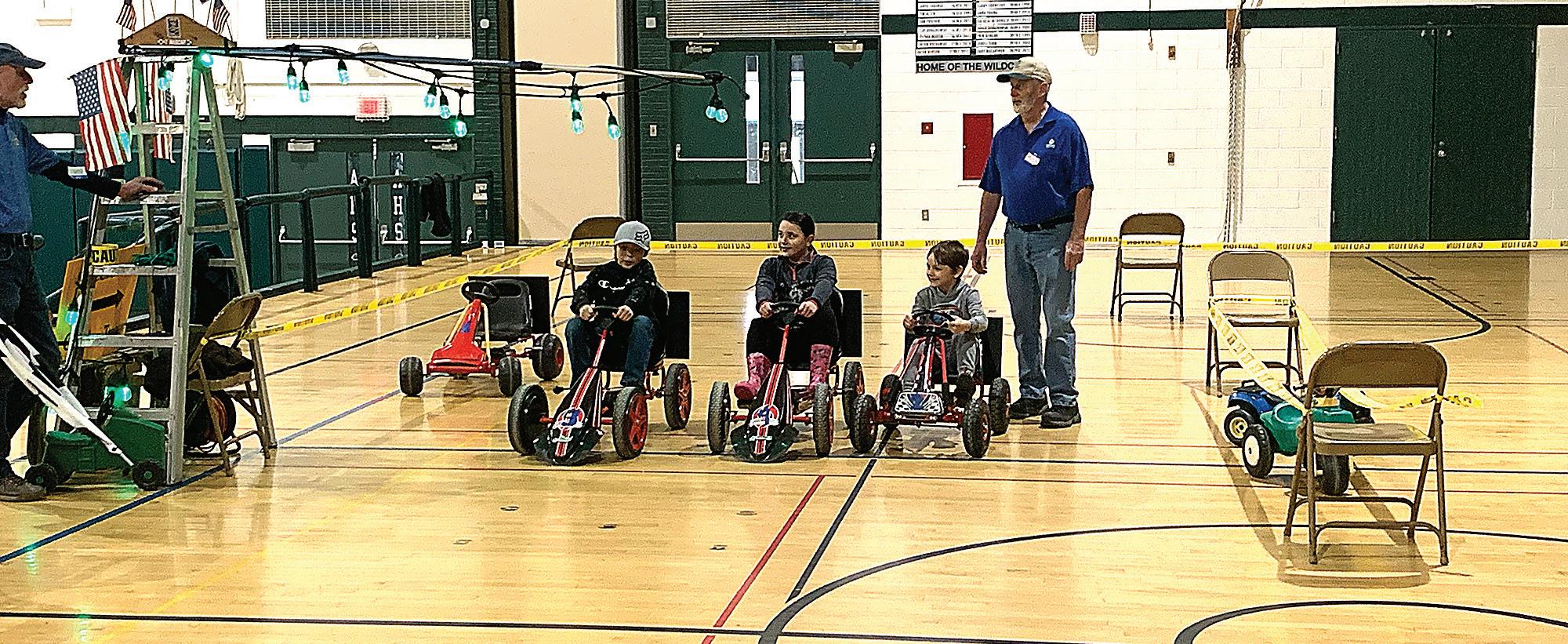
By TEMI FADAYOMI News Staff Writer
ALPENA — On Tuesday, families in the Alpena community converged at Alpena High School for a day of fun as the Alpena Optimist Club put on their 40th annual Free Family Fun Day.
a dessert. Consolidated Fruit gives us fruits for the kids every year. So that is kind of a healthy snack that they can have.” For activities, the gymnasium was opened up for a few sports and a variety of carnival games as well as other fun activities like go-cart racing.
“We’ve been coming to this for many years,” Alpena resident Jennifer Werda said, who attended the event with her children Maggie, Mason, and Lyra. “Our kids always enjoy it. There are always a lot of games and activities and they have fun. It’s a good time.” According to the club’s president, Beckie Thomson, the Optimist Club puts on the Free Family Fun Day on the Tuesday of spring break every year. Thomson said that the primary goal of the event is to provide a day of fun and excitement for the families that for one reason or another aren’t able to travel for spring break. “We have been doing this at the high school every Tuesday of spring break,” Thomson said. “We have been doing it mostly for those families who either cannot afford to take their kids on a vacation or they’re working and they can’t get time off to take their kids on a vacation, so the kids are stuck here when everybody else is going somewhere and having fun and coming back to school and talking about it. We wanted to give them something that they could go back to school and talk about. So we started spring break fun day.” Originally, according to Thomson, the event started as a day strictly meant to entertain the kids, but it started to shift to a more family and community focus as community needs increased.
“We opened the gyms so they can play basketball and volleyball,” Thomson said. “We have go-karts that we have gotten donated from all of the car dealer ships in the area. We have a few carnival games that the Optimist Club has had for years and we open the carnival games up but let the kids play.” Additionally, the event had multiple vendors who provided education and entertainment for those who attended.


“We invite vendors that might have something educational or fun for the kids to do,” Thomson said. “Like District Health Department No. 4 is always here. They talked about dental health, mental health, and other physical health. The Sheriff’s Department is usually here and the Michigan State Police and they talk about safety. Home Depot is here and they have crafts for the kids that they can either take home and build or build here.
The Fish and Wildlife is always here and they just show a lot of different animals that are conducive to our area and let the kids know different things about the animal’s history and lifestyle where they will find these animals and how to treat them. The farmers market is always here and they have fruits and vegetables.”
“At first it was just for kids,” Thomson said. “But, as the community needs become greater, especially in the food department because there are so many families that aren’t able to afford things, it just became Free Family Fun Day instead of Free Kids Fun Day.”
A majority of the food and drinks were donated to the event with the cookies served being handmade by the club members in preparation for the event.
“We get chips from Perch’s IGA, they donate them every year for us,” Thomson said. “We get pop and drinks from Pepsi, which they donate to us every year. We, as a club, make homemade cookies for the kids so that they have
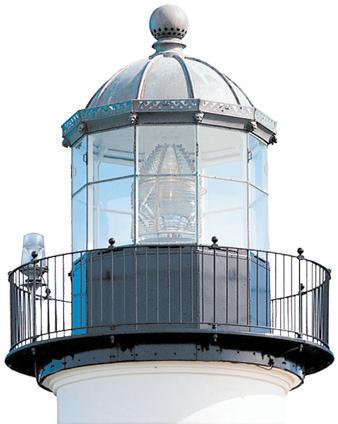


By MIKE GONZALEZ News Staff Writer ALPENA





— With a bit of paint, foam, hot glue, and blades to finely craft materials, Brooke Stenz, a professional cosplayer based in Alpena, can turn into just about any pop-culture character. From Oogey-Boogey from “A Nightmare Before Christmas” to Raven from “Teen Titans,” Stenz has transformed into many iconic villains and heroes from video games, comic books, movies, and other media in her career.
“I love dressing up as different characters and embodying those characteristics,” Stenz said. “It’s so much fun. Besides that, it’s probably the actual making of stuff. I really like getting hands-on with the foam, looking at the reference, and going, ‘Okay, that looks impossible. I’m going to try and make that.’”
Stenz started her professional career in crafting in 2015, making this year her ninth year fully delving into a profession many never thought was possible. She said that around that time, Stenz was experienc- ing bad anxiety and started crafting costumes. After really getting into the craft of cosplaying, her career took off from there.
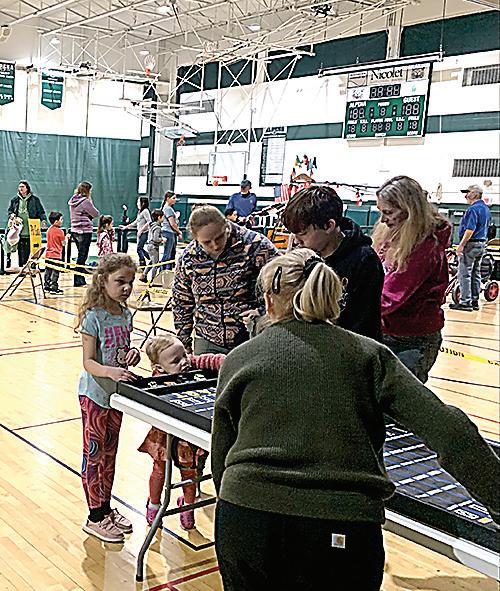
“This is the magic, right here,” Stenz said as she sorted through all the different foams she had laid out on her crafting table. “I have a lot of samples of foam for panels and whatnot. Each foam has a certain density to them. So obviously, I’m a smaller person, so I use the smaller sizes on a lot of cosplays. But if I want something that’s big and chunky, or thick-looking, I’m going to go up in sizes of foam.” Stenz showed off the blade that she used to cut

ferent cosplays of hers on various mannequin displays and one co splay had angelic wings on the back that stretched about a foot out.
She noted that every feather or ruffle of a wing, which looked like thin crafting paper, was actually cut-out pieces of foam that people might use in a box to move delicate ob jects.
“They weren’t too bad to make,”
Stenz said, laugh ing. “They’re actually small wings compared to what I normally make.”
Now, Stenz has been on the covers for cos play and video game magazines such as “The Indie Gamer Magazine,” and has re ceived multiple awards from cosplay contests. On top of being on the cover of “The Indie Gamer Magazine,” Stenz was also awarded the title “Cos play Creator of 2021.”
Stenz has also gone to many video game, comic, and anime conventions around the country as a guest cosplayer for different panels and shows during the weekend event. “About three years after I started, a friend had called me and he’s like, ‘Hey, I have a friend that runs another convention and he needs a guest cos- player,’” Stenz said. “So I was like, ‘Well, I’ve never done it before. Yeah, I’ll do it.’ I didn’t know what I was doing. But I went there and then ended up doing shows with that convention around the coun try. I think I did six shows and then after that, about every other weekend, we were going out of town


The next conventions Stenz will make a guest ap pearance at are the Cadillac Pop Culture Convention on April 6 and the Grand Rapids Comic-Con Spring
“Crafting with foam takes a lot of practice,” Stenz said. sometimes“Unfortunately, lots of money, too, to learn from that practice.”



